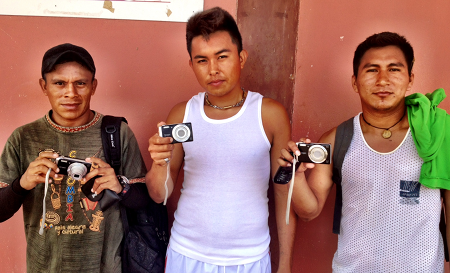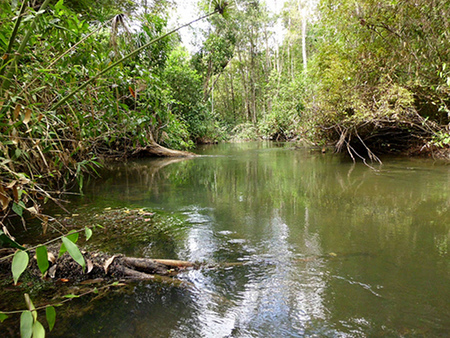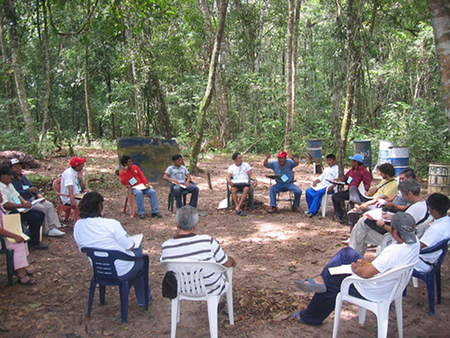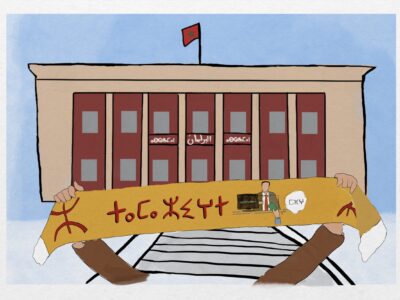Sometimes it may take days for students to arrive to the campus of the Indigenous University of Venezuela (UIV). Coming from one of the indigenous communities across the country, students arrive by boat, bus, and even by foot to begin the semester. They are attracted by an innovative way of learning that takes into account the special context in which indigenous communities live. The UIV describes its mission as [es]:
A university that raises awareness and educates young indigenous students so that they can serve their communities. We preserve and strengthen indigenous peoples and we put forth intercultural and experimental higher education
The campus sits on 2,000 hectares of forest and savannah located in Tauca in the state of Bolívar. The original university's visionaries from an indigenous rights organization made up of indigenous leaders and Jesuit priests wanted to maintain as much of the traditional way of living as possible. Students live in small residences or “villages” with members of their own ethnicity or with students from other communities, where they cook over an open flame in community. They can also take advantage of the land where they can fish or hunt for their food.
In addition, students take part in a variety of classes ranging from indigenous rights, history and language, and courses about the cosmic view and spirituality of their cultures. They also learn topics related to production, such as beekeeping, the raising of ducks and fish, and other agricultural practices. This mix of academic and productive knowledge is part of what makes the university so unique and addresses the actual context facing the students.
Coming from one of the estimated 35-45 indigenous communities across the country, students come from communities such as Pemón, Warao, Ye´kwana, Yukpa, and others. Students are nominated by their communities to enter the university with a clear mandate to return home to the benefit their communities once their studies have been completed.
With so much activity and a wealth of fascinating stories from the students, often the only time that news and images originate from the campus is when visiting professors or other visitors return home, such as the case of Global Voices contributor Luis Carlos Díaz, who documented his visit on his Flickr album. However, more and more students are active on the web taking advantage of the InfoCentro located on campus. Thanks to this government program, which provides the physical infrastructure and internet access to rural communities, students have the potential to take a greater role in showcasing their university to the country, region, and the globe.
Rising Voices Collaboration
Thanks to a UIV project supported by the Avina Foundation, Rising Voices was invited to visit the university during the last week of February, and work closely with a group of students. The main objective of the visit was to support the students strengthen their citizen media skills to a point where they can be resources for other students that regularly use the internet.
The primary tool taught to the students was the use of digital photography. Due to the fact that uploading photographs would be more effective considering the connectivity, three students took part in the week-long workshop, where they learned about the basics of composition, as well as how to upload their pictures to the UIV's Flickr account. The three students: Wadaana Lisander, Kuranicha, and Akaneto are part of the edu-communications department of the university.

UIV students that took part in the workshop.
Despite the technical challenges facing the students, such as the occasional power outages, high temperatures in the computer lab, and a satellite connection that would sometimes slow to a crawl, the students were highly motivated to learn how to play an active role in telling their own story. During the week, they would borrow one of the university digital cameras and snap photos of their villages, community work, meals, and the beautiful nature that surrounds the campus.
The content is now being utilized and shared by the university's communications department, who use their social networking sites such as Twitter (@TaucaUIV) and Facebook to reach a larger audience. The plans are to continue with this work, and for the three students to take a more active role in helping their fellow students use the internet to share news about this unique educational experience in Venezuela.
Update: To see more examples of the students’ photographs, please visit this photo post on Global Voices.






11 comments
Eddie, If I knew you were here visiting! Beautiful project. I gave a similar workshop in Bangladesh for Nari-Jibon some years ago. Please contact me next time you are around!
Hi Kira, it was a super quick visit – in and out of Puerto Ordaz. One thing that I took away from the visit is that not many Venezuelans know about the existence of the UIV, I wonder if that’s true? There are a lot of interesting things happening there and I hope that we can facilitate contacts. Thanks and I will let you know next time I come through. Saludos!